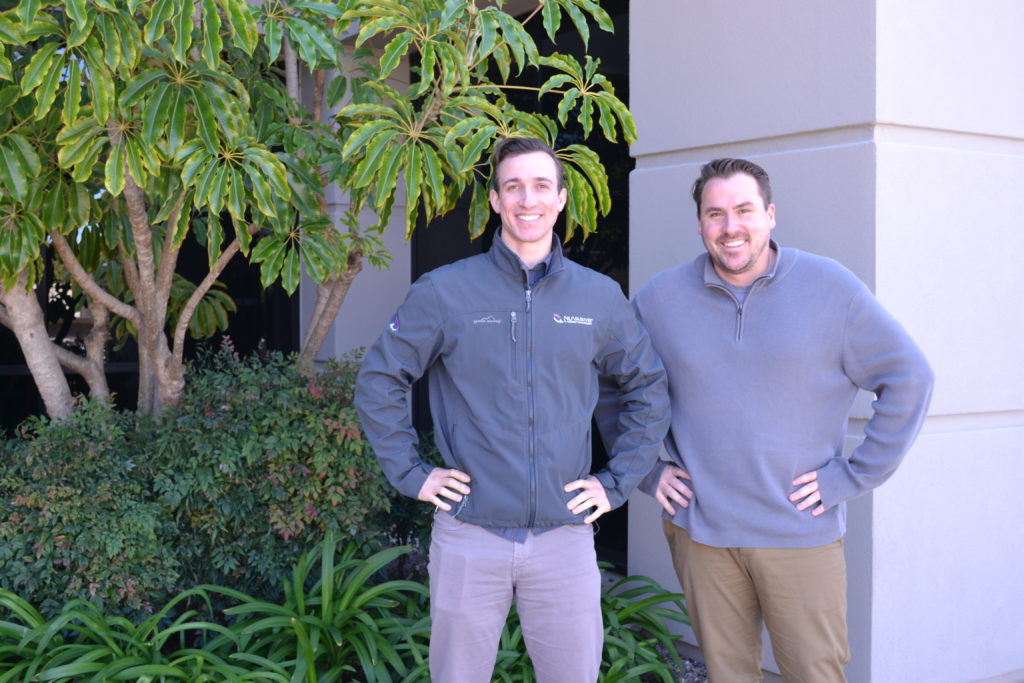Built on the foundation of XLIF®, NuVasive® features XLIF Crestline™, Lateral ALIF™, and Lateral MAS® Fixation, enabling lateral single-position surgery from T6-S1 and helping increase O.R. efficiency. We’re featuring ALIF Access innovators, Aaron and Byron, to give you an inside look into what it’s like helping drive innovation at NuVasive.

The ALIF Access system is a key component to Lateral ALIF. Lateral ALIF has all the characteristics of a traditional supine ALIF and is specifically designed to access L5-S1, but performed with the patient in the lateral decubitus position. The ALIF access system enables access for multiple ALIF approaches and help bridge the gap between traditional supine ALIF and the XLIF procedure. When compared to posterior approaches, Lateral ALIF has a potential for avoiding complications associated with posterior approach and allows for placement of implants with larger footprint and increased lordosis. Read their interview below:
What sparked the need for ALIF Access (market analysis or engineering idea)?
- Aaron, Marketing: For 15 years NuVasive has been growing our XLIF business without a comprehensive lateral solution at L5-S1. We have finally solved this challenge and are able to give our surgeon customers the ability to treat L5-S1 laterally and continue up the lumbar spine with XLIF.
What were the resources needed to start this project?
- Aaron: Engineering and surgeon know-how, combined with a willingness to take on this difficult undertaking. This solution has been years in the making and the experience of several design surgeons and our development engineers was critical.
- Byron: Besides the team and finding budget, we needed buy-in from leadership in the company to believe in the vision and the value this would bring to helping improve patient outcomes and to the business.
Usually the first idea might not be the greatest idea. Was the original idea for ALIF Access what it is today? If it has changed, what necessitated the change?
- Aaron: Several improvements were made from Alpha to Beta to Launch. Locking mechanisms were too bulky and cumbersome, the ring itself has changed shape several times, and even the way the carbon fiber frames interact with the articulating arms has improved dramatically. If we were to show a picture of the original access system, many would think we were crazy. Our surgeons and their patients deserved better and I firmly believe we delivered!
- Byron: The launch design is quite different from the original alpha design. Through user feedback and internal know-how learned along the way, the retractor evolved into the ALIF access system that it is today.
What skills did you have to acquire to be able to create ALIF Access?
- Aaron: Gain an intimate understanding of not only what the spine surgeon’s visualization needs are during an ALIF, but also the exposure surgeon as well. We had to be sure to implement key surgeon feedback when designing and developing this system.
- Byron: One of the unique things about this project is that the vascular surgeon (access surgeon) is often the one doing the exposure and manipulating the retractor the most. Then, the spine surgeon comes in for the interbody portion of the case. Learning about the dynamic between the two different surgeons and the different concerns that the access surgeon has versus the spine surgeon was very interesting throughout the project. Additionally, from the engineering side, we had to learn a lot about carbon fiber as that was a material that we have never used before, which is an integral part of the retractor system.
Would you like to share anything else about ALIF Access and the making of it?
- Aaron: This is our 1st ever ALIF access system! We had a disruptive ALIF portfolio without an access system, so imagine where we are going to go now with a state-of-the-art system in our bag. SKY IS THE LIMIT!
- Byron: For me, I just want to tip my cap to my colleague, Casey, as the primary designer of the system. I had the luxury of coming in after the designs were mostly locked down and just take the project across the finish line. The system is very elegant and it made my job a lot easier. Also, the vision from the marketing team from start-to-finish was key. There was a clear path that they saw and it helped to champion the project to success.
View our other Innovator Interviews: XLIF Crestline and Modulus XLIF.
If you’re interested in becoming part of the innovation here at NUVA, search our open roles here.